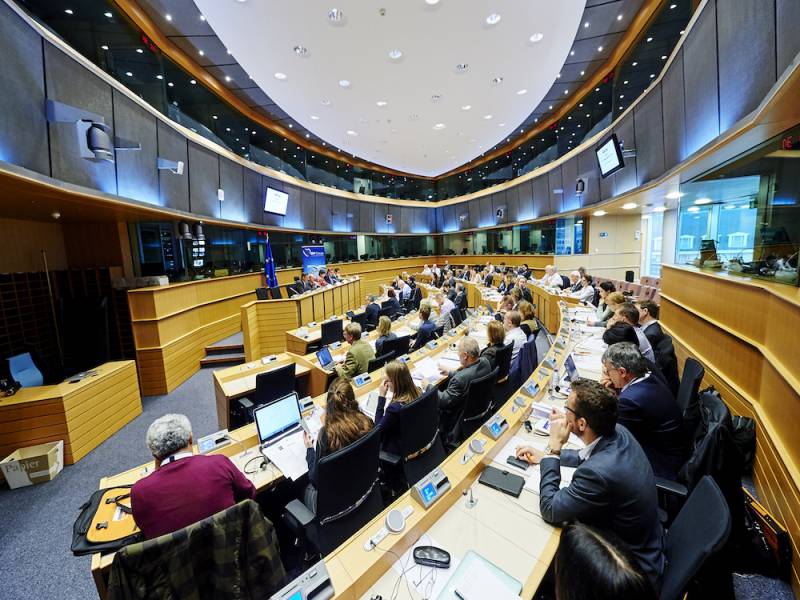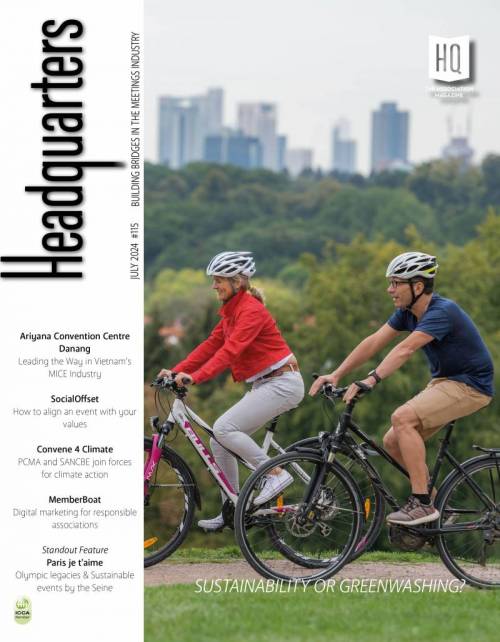HQ Profile: EPAA spearheading the Future

The European Partnership for Alternative Approaches to Animal Testing (EPAA) is an unprecedented voluntary collaboration between the European Commission, European trade associations, and companies from seven industry sectors. Jonathan Crozier, Communication Manager, explains how untypical the organisation is.
 Could you present the European Partnership for Alternative Approaches to Animal Testing?
Could you present the European Partnership for Alternative Approaches to Animal Testing?
The EPAA was created in 2005 as a Public Private Initiative between services of the European Commission and industry stakeholders. Its vision is the replacement, reduction and refinement (3Rs) of animal use in regulatory requirements through better and more predictive science.
Its mission is to
1. promote the development, validation and implementation of alternative approaches
2. enhance the acceptance, harmonization and mutual recognition of tests by regulators at national, European and international level
3. foster knowledge sharing among the partners on the implementation of 3Rs
4. Provide a mechanism for dialogue and communication with key stakeholders on developments that effectively contribute to animal welfare.
The first two terms were completed and EPAA partners decided to renew the partnership for another five years in 2015. In 2016, the EPAA partners on are working under the lead theme “Science-based regulation”.
To date, 35 companies and 7 industry sectors are represented within EPAA, along with 5 Directorates-General of the European Commission.
We understand you’re no “typical” association. Can you explain why?
Indeed, EPAA is not a typical association, it is a completely voluntary partnership between different actors. Therefore, all the decisions undertaken by EPAA are consensus-driven and we put a lot of effort to make sure our recommendations and documents reflect previously agreed positions and based on sound science.
For this we also work very closely with stakeholders through our Mirror Group. This advisory body consists of NGOs representing animal welfare, patients and prominent scientists.
One of the strengths of EPAA is that it is cross-sector structure, bringing together actors working under different legislations and context.
What do you find most challenging as an organisation?
Since the creation of EPAA many new actors have entered the field of 3Rs and progress has been achieved. The challenge for EPAA, which is a small organisation, is to find its ideal niche to spearhead the future and make the biggest contribution possible. We select areas where our specific cross-sector, cross-organisation set up can bring the most.
Therefore, EPAA concentrates on 3Rs for regulatory acceptance and this year particularly on "science-based regulation".
Where does the future of EPAA lie?
The partners of EPAA have decided to prolong EPAA with a new 5 year mandate. During this period EPAA will focus on closer co-operation with regulators at global, European and national levels striving to promote international harmonization of regulatory testing requirements. The unique range of partners and participants in EPAA including industry, regulators and animal welfare groups give it the ability to act as a forum for cross-sector dialogue, EPAA can reach out to Member States and help provide a coordinated EU voice. Through the involvement of the EU Commission and global companies, EPAA has the potential to liaise with the wider international community.
What kind of events do you organise? Can you explain your requirements?
EPAA typically organises 3 kinds of events, in addition to participating to selected external events: scientific workshops for our project teams, topical workshops on a broader theme and an Annual Conference as our flagship event.
Our project teams meet in scientific workshops which typically gather 20 to 50 expert participants. For instance, in 2016 EPAA is organizing a workshop to promote the adoption of non-animal alternatives in Rabies vaccine batch testing.
Regarding the topical events, they usually address a lead theme, gathering several sectors and representatives from various fields of expertise. For instance, in 2016, EPAA is organising a workshop on "Science-based regulation" with approximately 30participants from all over Europe.
The Annual Conference takes place in Brussels around November/December, gathering between 100 and 200 participants. The European Commission partners usually host this event, even though the 2015 issue was held at the European Parliament in Brussels The Conference is a half day or a full day event with the aim to report to the EPAA members and external stakeholders on the year’s activities and milestones.
Can you share your insights about the latest trends in the association community?
Throughout the past decade, we have witnessed an increased number of Public-Private Patnerships to address complex scientific and regulatory challenges. It is positive to see that most of the major funding programs in Research and Innovation rely on public-private cooperation gathering industry stakeholders, representatives of the Academia and regulators.
 In addition, online communication and social media are also becoming increasingly important in the association world: most of the Brussels-based associations involved in European affairs have a Twitter feed, LinkedIn profiles and sometimes even more contents are offered (YouTube videos, micro-blogging, etc.) to ensure effective 2-way communication with users and the public.
In addition, online communication and social media are also becoming increasingly important in the association world: most of the Brussels-based associations involved in European affairs have a Twitter feed, LinkedIn profiles and sometimes even more contents are offered (YouTube videos, micro-blogging, etc.) to ensure effective 2-way communication with users and the public.
Other Articles
About Us
Supported by the Union of International Associations (UIA), the International Association of Professional Congress Organisers (IAPCO) and the Interel Group, the global public affairs and association management consultancy, Headquarters Magazines serve the needs of international associations organising worldwide congresses.















